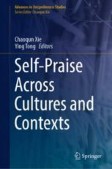Search
Search Results
-
The Double-Edged Practice of Self-Praise and Self-Denigration in Korean Public Discourse
This conversation analytic study examines a particular practice involving self-praise and self-denigrationSelf-denigration routinely deployed by...
-
Self-denigration Among Japanese Female Fans Online: Creating Community Through Marginality
As passionate fans of nonnormative media, fujoshi—female fans of male–male romance Japanese comics—often experience harsh criticism, which fujoshi...
-
An Empirical Study of Chinese Microbloggers’ Explicit Self-Praises
Self-praise is in conflict with the traditional Chinese value of “being modest” and the politeness maximPoliteness maxims of...
-
Self-Praise in and through Selfies: A Multimodal Perspective
The undesirable nature of self-praise has long been widely held within and without pragmatics, albeit mostly at the level of theoretical...
-
“I Am Well-Loved by the Voters”: Self-Praise in Thai Political Discourse and Two Emic Concepts of Thai (Im)politeness
In Thai cultureThai culture where the cultural concept of /?ɔ̀ɔnnɔ́ɔm-thɔ̀mton/ ‘being respectful-being modest’ is a core principle of politeness,...
-
Introduction: Self-Praise Across Cultures and Contexts
This volume aims to showcase how self-praise, a long-ignored and biased social normNorm, is well-represented and interactionally-constructed across...
-
“I Am Bloody Amazing and So Are You!”: The (Im)politeness of Self-Praise in the Instagram Posts of Fashion and Lifestyle Influencers
Recent studies of self-praise in CMCComputer-mediated communication (CMC) (Dayter, 2016, 2018; Matley, 2018)Dayter, D. indicateMatley, D. that, in...
-
Self-Praise in Peninsular Spanish Face-to-Face Interaction
Considered a form of self-presentationSelf-presentation, self-praise can be defined as a speech actSpeech act involving an implicit or explicit...
-
The Development of Intercultural Communication Theories in China
Intercultural communication was introduced to China by foreign language teaching researchers in the early 1980s. At the beginning, Chinese scholars...
-
Self-Promoting: A Double-Edged Sword
This chapter aims to enrich our understanding of the speech actSpeech act self-praise performed in managerial responsesManagerial responses to hotel...
-
Self-Praise in BELF Meetings
Self-praise is related to social image and self-presentationSelf-presentation (Goffman, 1959)Goffman, E.. It is defined as a speech actSpeech act...
-
“I’m Your Guy”: Self-Promoting Behaviour in a Slovenian Translators’ Forum
Self-promotion and positive self-disclosureSelf-disclosure are widespread on social mediaSocial media. Despite their pervasiveness they have been...
-
Self-Praise in Russian: A Wild Goose Chase
This chapter examines self-praise use across different genresGenre in Russian with a focus on the use of key-words of praise/self-praise. In...
-
When Doctor–Patient Discourse Isn’t Adequate: Social Media Health Multimodal Dialogic Discourse Analysis
The adequacy and efficacy of doctor–patient communication has remained contentious. It is a fact that some patients are seen seeking reprieve from...
-
Pride, prejudice and pragmatism: family language policies in the UK
In this study, we examine how mobility and on-going changes in sociocultural contexts impact family language policy (FLP) in the UK. Using a...
-
Ideal Classmates Priming on Motivations and Engagement: STEM and International Studies Students
This study explores if and to what degree improvements could be made in learning motivation and prosocial engagement among STEM students during...
-
Shame: Challenging Linguistic Strategies of Representation
This final analysis chapter explores self-representations in the personal stories found in newspaper articles. The personal stories identified...
-
Contradictions in Making 中文 (Zhōngwén/Chinese) Learnable
This chapter provides an innovative approach to considering the contradictions teachers experience in making 中文 (Zhōngwén/Chinese) learnable as a...
-
Introduction
This chapter provides an overview of the social realities of marginalization in contemporary Japanese society, locating the gap in existing...
-
The Self, the Other, the Tribe, and the Divine: Self-Praise Discourse in Jordanian Arabic
This chapter explores the use of self-praise in Jordanian ArabicJordanian Arabic (JA) in a corpus of online and spoken data. The analysis, grounded...
